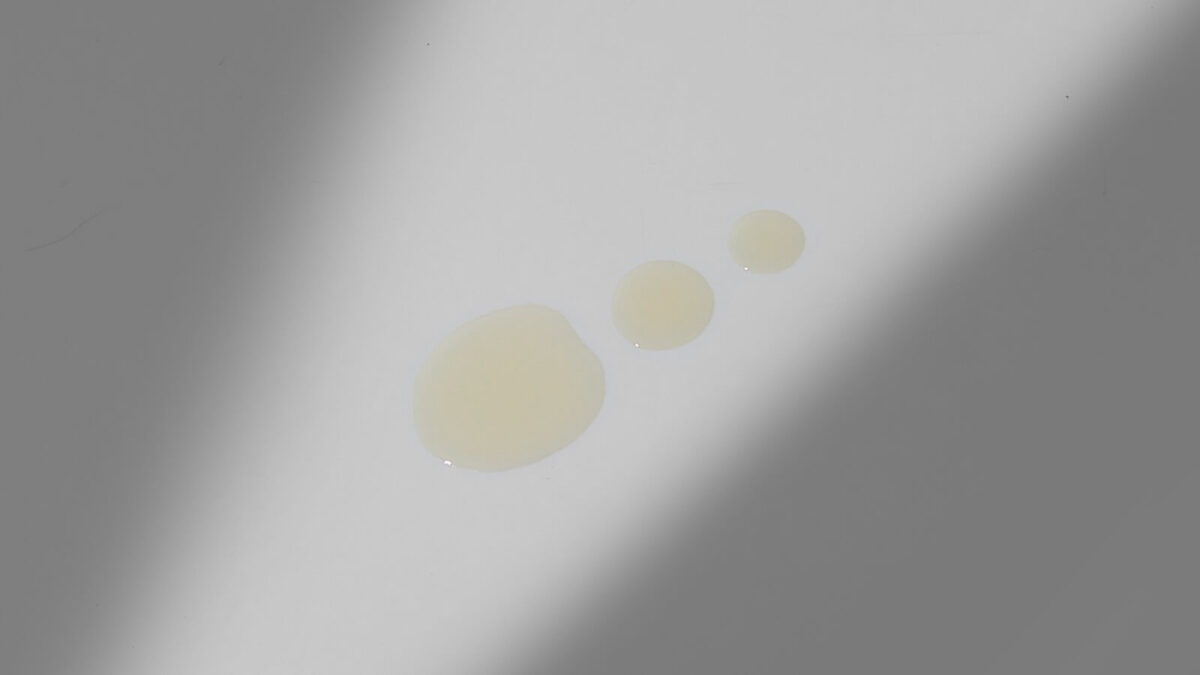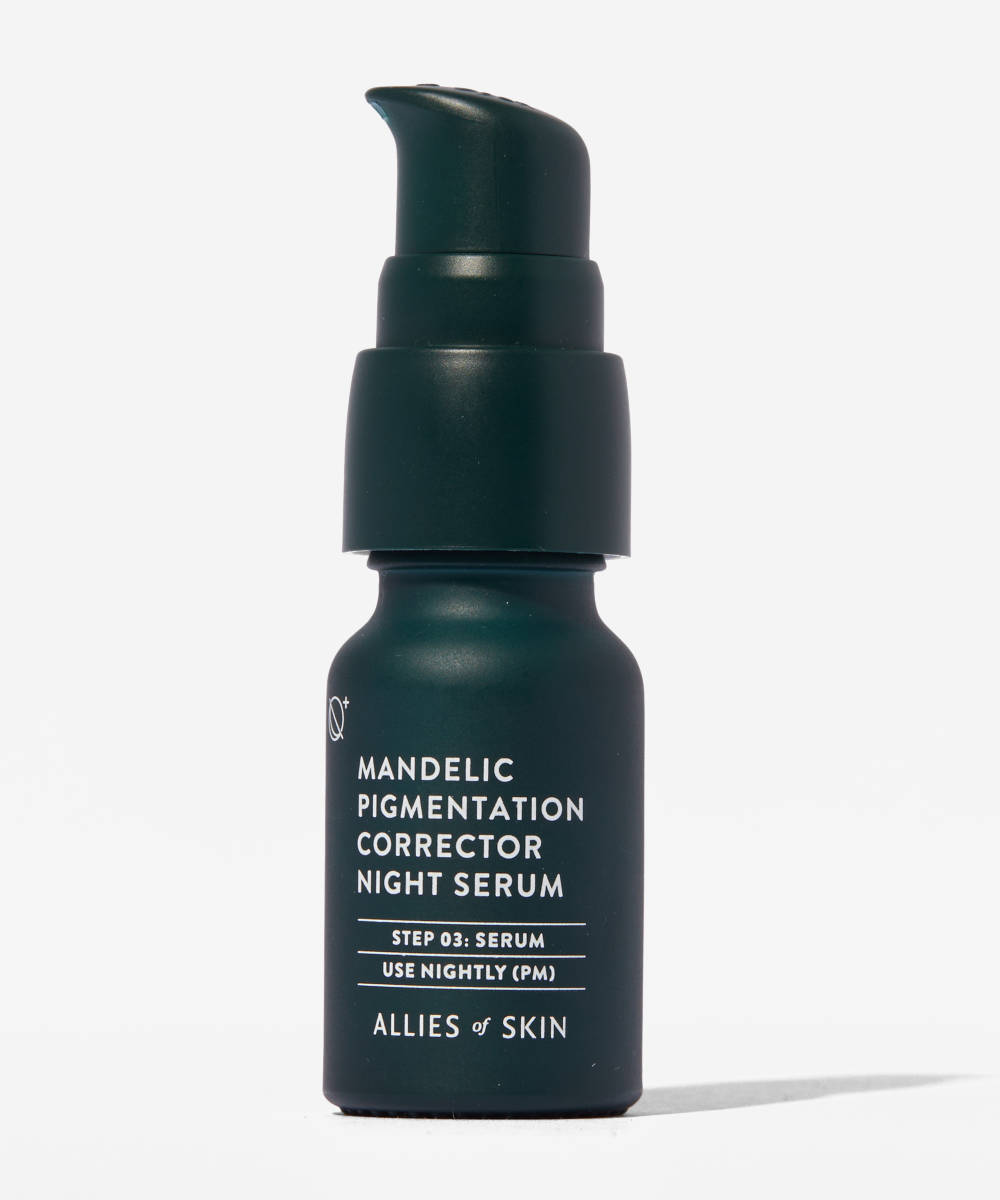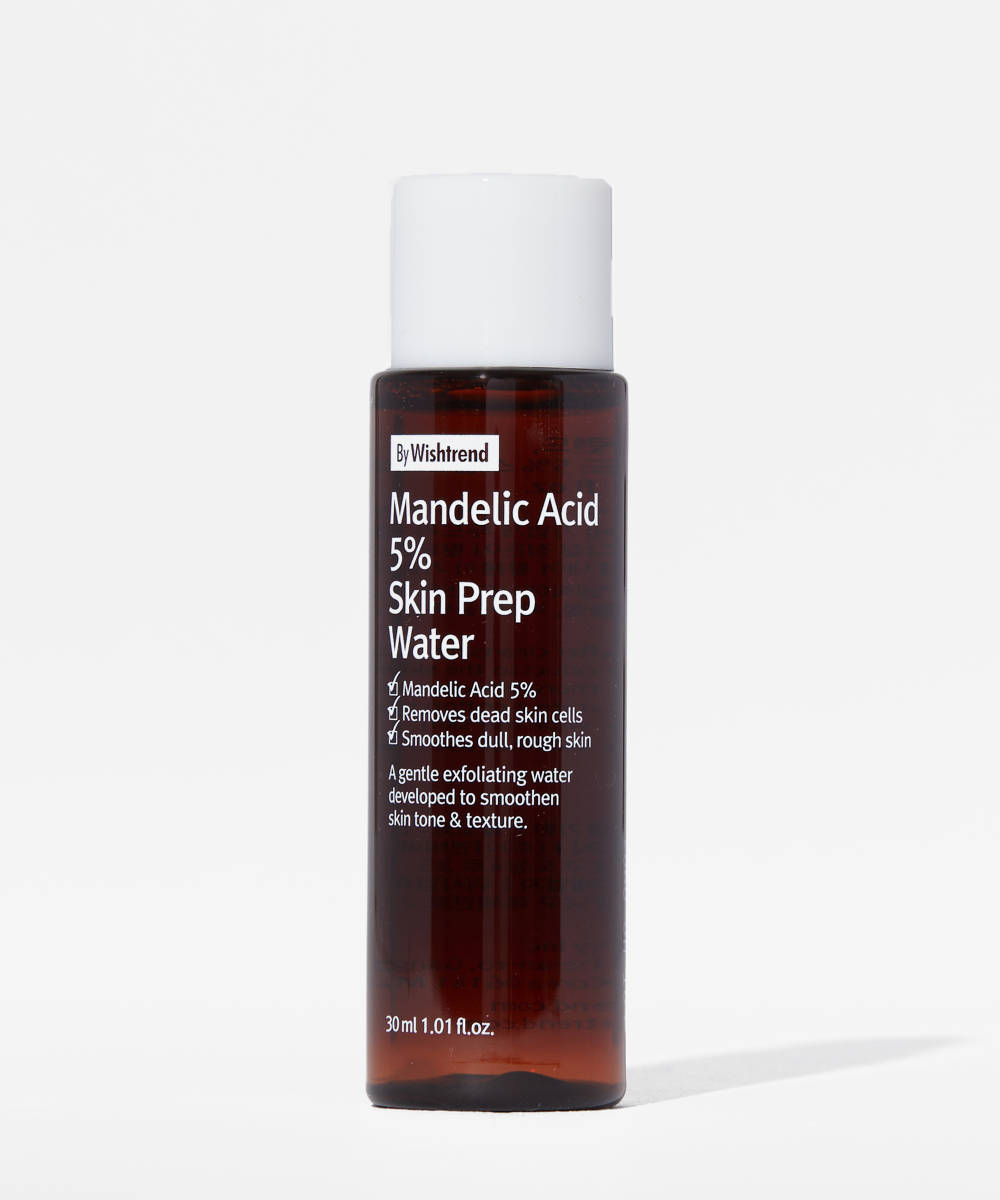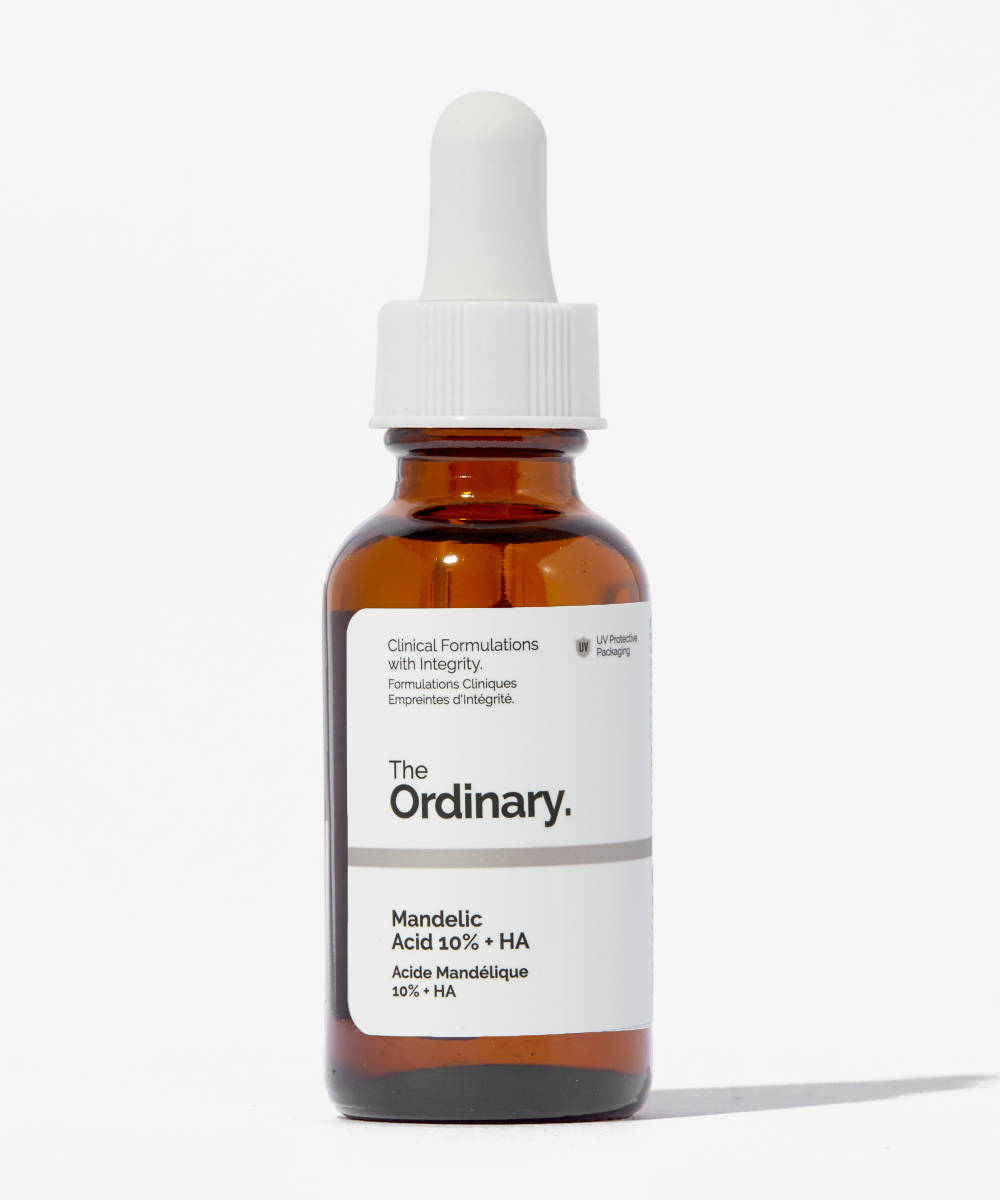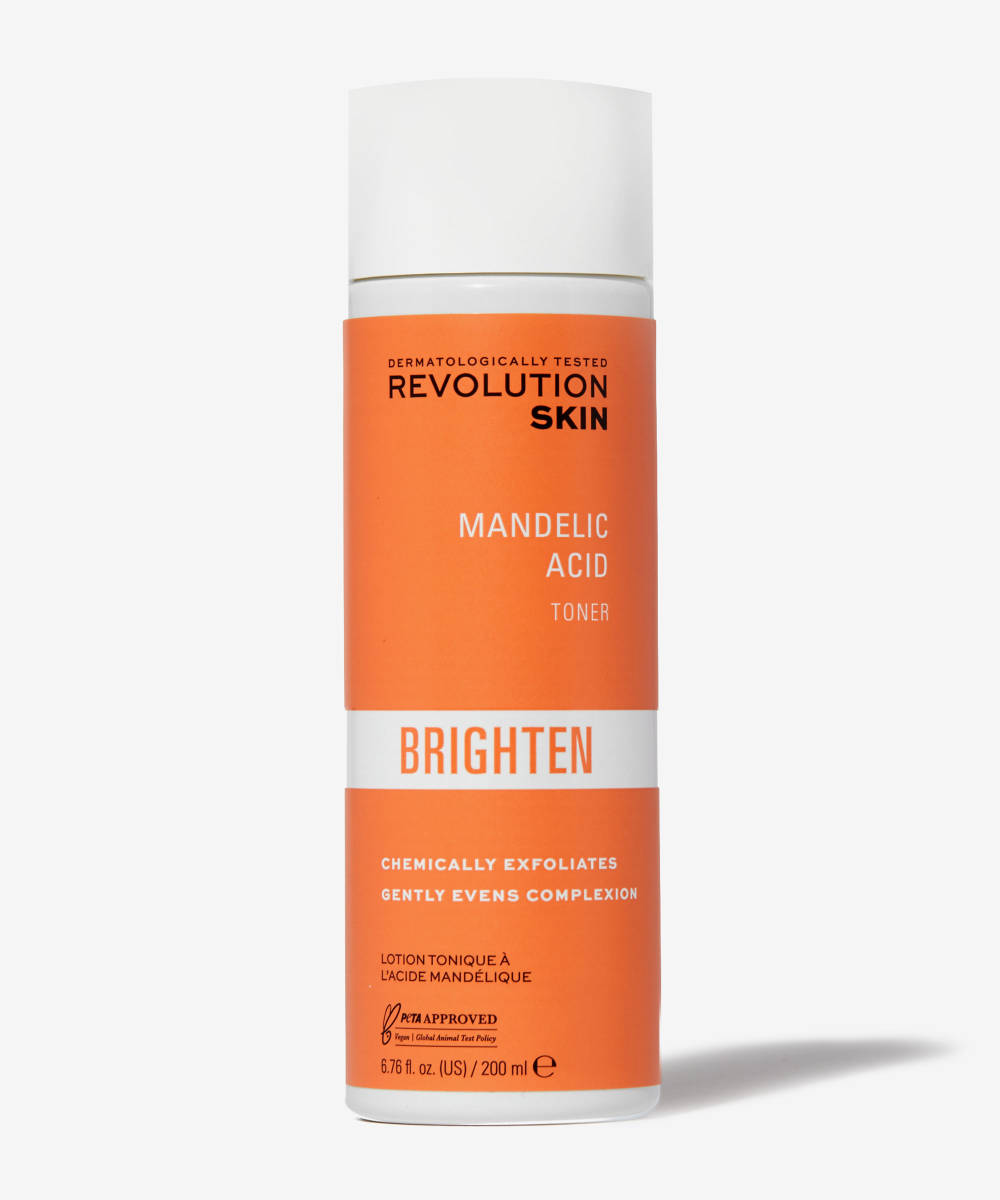Have sensitive skin and thought you could never use AHAs as part of your skincare routine? Enter: Mandelic acid. This smart exfoliating acid is the most gentle of the AHA family, making it an excellent option if you’re prone to irritation. Not only does it help keep our skin looking radiant, but it also helps with concerns like acne and hyperpigmentation.
Here, we look into what mandelic acid is, how it works and how to use it for optimal skin brightening, smoothing and clearing.
What is mandelic acid?
Mandelic acid is part of the alpha hydroxy acid (AHA) exfoliating acid family. It’s derived from almonds and is gentler than other AHAs (think: glycolic acid) due to its larger molecule size.
You most often find mandelic acid in the form of a serum, a peel (both at home and professional), but it’s also found in some masks. It’s found commonly with lots of other ingredients in a formula for maximum benefits, but more recently it’s being used alone as the star ingredient.
How does mandelic acid work?
Because mandelic acid has a larger molecule than other acids, it gets to work in the skin more superficially and also at a slightly slower rate. This means that you get all the exfoliating benefits without unwanted irritation.
Mandelic acid works through chemical exfoliation (as opposed to harsh physical scrubs) to loosen off the bonds holding into unwanted dead skin cells. Ridding these skin cells reveals brighter, clearer and a more even texture complexion.
What does mandelic acid do?
Mandelic acid is a great multi-tasker, thanks to its ability to exfoliate. This exfoliation helps to give near instant brighter skin, but also increases cell turnover. This turnover has a whole host of benefits, including lessen acne, minimising fine lines (by boosting collagen production), and reducing hyperpigmentation.
In addition to exfoliating, mandelic acid is also an antimicrobial, which helps to prevent and fight acne-causing bacteria. Since it’s a gentle acid, it does this all without irritating or causing further inflammation by compromising the skin barrier (we’re talking flaking, dry skin, and general soreness). This also makes it a great option for acne rosacea (formally known as papulopustular rosacea).
Because mandelic acid works so well as a mild yet effective exfoliator, it’s also great for milia and keratosis pilaris as it helps to unclog pores and prevent congestion.
When should you use mandelic acid ?
As with most exfoliating acids, less is often more. Start off using your chosen product once a week and building it up from there. If you’re using a mandelic acid toner or serum, apply it on freshly cleansed skin, before moisturising. We recommend trying it at night time and with products you can already rely on and know don’t cause irritation. That way it’s easy to spot if the new exfoliating ingredient is causing unwanted side effects.
Mandelic acid can be combined with many other ingredients but it’s always best to check with a skin expert or dermatologist if you’re unsure about skincare layering — particularly when it comes to exfoliating acids.
One ingredient that’s not recommended to layer mandelic acid with and that’s retinol. Using the two together can cause unnecessary irritation, which can lead to an impaired skin barrier. If you’d like both in your routine, it’s best to alternate the days you use each.
When it comes to side effects of mandelic acid, increased sun sensitivity comes top of the list. That means you need to make sure you’re staying on top of sunscreen application (and reapplication over makeup!)
Try these...
Small but mighty, this serum works to tackle hyperpigmentation and breakouts thanks to its cocktail of 11% mandelic-, lactic-. and salicylic acid, in addition to antioxidants and peptides. This is a concentrated treatment that doesn’t mess around in getting the job done.
With mandelic acid, panthenol, and centella asiatica extract this toner works to resurface uneven texture and soothe complexion. Whilst no skincare is instant, this one will work wonderfully to give your skin that fresh pick-me-up.
The Ordinary is known for affordable, efficacious formulas in this mandelic acid serum is no different. This serum in particular, also featuring hyaluronic acid, is great for milia.
